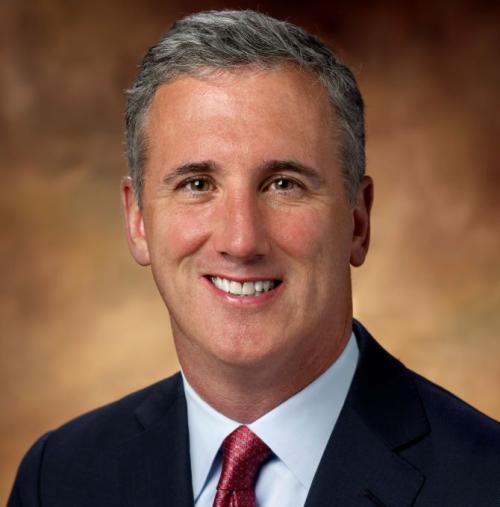GMI estimates two fifths of S&P 500 have already adopted some provisions.
In 2006, when Microsoft’s compensation committee drafted the company’s first clawback policy, there was no real outcry, recalls John Seethoff, vice president, deputy general counsel and assistant secretary. Three years later, when the board broadened the technology giant’s clawback policy – making the trigger all financial restatements, even ones caused by honest error – the change again came with little angst.
‘Our compensation committee has been comfortable with the notion that if there is a mistake with a payment, it’s appropriate to make an adjustment,’ says Seethoff. ‘It’s always been a smooth discussion.’
Microsoft’s willingness to implement clawbacks even before the SEC officially mandates them under Section 954 of the Dodd-Frank Wall Street Reform and Consumer Protection Act places it in good company. Paul Hodgson, senior research associate at GMI, estimates that over two fifths of the S&P 500 have clawback provisions of some kind in place. Early adopters include UnitedHealth Group, Intel, McDonald’s, Alcoa, General Electric, Walt Disney and Newmont Mining.
And while Sarbanes-Oxley introduced the clawback concept to most of corporate America nearly a decade ago, these policies became widespread only recently. The prevalence of publicly disclosed clawback policies in the Fortune 100 increased from 17.6 percent in 2006 to 84.2 percent in 2011, according to executive compensation data firm Equilar.
Principle or pragmatism?
Hodgson speculates that companies introducing clawback provisions prior to 2009 believed that this was ‘simply the right thing to do’. Those companies joining the bandwagon in the last 12 to 24 months, however, might be motivated less by idealism and more by pragmatism. ‘Companies are introducing clawbacks today because they see it as a done deal anyway,’ Hodgson contends.
Even with an SEC mandate for clawbacks looming, not all experts recommend rushing to implement clawback provisions. Deborah Lifshey, managing director at executive compensation consultant Pearl Meyer & Partners, believes it may be more prudent to ‘punt until we know the specifics of what the SEC will do’. She maintains that there are simply too many question marks surrounding the SEC’s plans to act before the rules have been published. Industry-watchers speculate that the rules may be proposed as early as the beginning of 2012.
In a recent column posted on Boardmember.com, Lifshey lists a number of areas that will need to be clarified when the rules are issued:
• Does the triggering period commence when a decision to file the restatement, the work on the restatement, or the restatement occurs?
• What is the definition of an ‘executive officer’? Without guidance, this presumably refers to individuals as defined by Exchange Act Rule 3b-7 (the president, any vice president in charge of a principal business unit, division or function, and any other officer who performs a policy-making function), or Section 16 officers.
• How does the policy apply to an individual who became an executive officer after the grant but before the restatement?
• What is the definition of ‘incentive-based compensation’? Does it apply to short-term and long-term plans, and does it apply to other forms of equity besides stock options?
• How is the recouped compensation determined if it was not tied to specific performance metrics?
• Is the clawback based on the award or payment of compensation?
• How does the three-year look-back period apply to stock options granted, vested and/or exercised during the previous three-year period?
Different strokes
Companies can enact clawback provisions in a variety of ways. At Intel, for instance, there doesn’t need to be an allegation of misconduct for executives to be asked to repay unintended corporate largesse.
‘If it turns out that the results were incorrectly reported – and we had to restate our financials – then it doesn’t seem inappropriate to go back and retroactively adjust the bonuses paid to senior executives,’ says Cary Klafter, vice president of legal and corporate affairs and corporate secretary at Intel. ‘Even in the event of an inadvertent error, if it was sufficiently significant that a restatement was called for, that would trigger our clawback.’
Clawback policies fall into two camps. The first, which Hodgson deems ‘the gold standard’ because it attempts to recoup executive compensation whenever a company restates its financials, with or without fraudulent behavior, has become increasingly popular. ‘There’s an impression that if there is legislation to come forward, this would be the way it would look,’ Hodgson says.
The second type of clawback policy only attempts to recoup incentive pay when an executive is involved in misconduct. Equilar found that in 2011, 79.1 percent of Fortune 100 clawback policies addressed situations in which an executive had behaved unethically.
Some companies are moving beyond these two categories and tailoring approaches to their own sense of fair play. At UnitedHealth Group, for instance, an executive who engages in misconduct that causes the company to restate financials faces a stiff penalty. ‘Most companies say that you forfeit the incremental amount you would not have otherwise earned, but our clawback policy says that you forfeit your whole bonus,’ explains Dannette Smith, secretary to the board.
Although UnitedHealth’s policy, which was adopted in 2007, is more draconian than some, employees haven’t balked. ‘Everyone says, I’m not going to be a bad actor, so that will never apply to me,’ Smith explains. Of course, the current policy isn’t set in stone. ‘We’re waiting to see what the Dodd-Frank rules will be,’ says continues. ‘When they come out, we’ll figure out what to do next.’
Beyond specific actions that would trigger a clawback, companies need to consider which executives would be subject to possible action. At UnitedHealth, for instance, the clawback policy applies to around 50 employees. Another key question is how far a company should ‘look back’ following a restatement.
Boards are also wrestling with whether clawbacks should apply to cash compensation alone or to equity-based compensation as well. ‘It’s a lot easier to draw a line between financial statements and the cash bonus plan,’ says Klafter. ‘With equity, of course, you’re effectively trying to identify some portion of stock movement that might have been related to the incorrect financials. And as we all know, it’s almost impossible to know what makes stock move.’ That said, when a clawback is triggered at Intel, the compensation committee has discretion to review payouts under the equity plan. ‘It’s a tough topic, but we wanted to have a provision, and in a clear case, we’d be able to utilize it,’ says Klafter.
Making clawbacks stick
Skeptics point out that clawback policies are easy to enact but difficult to enforce. Laurence Stybel, vice president of Board Options, thinks the crux of the issue is whether there will be strong enforcement.
Stybel speculates that the degree of enforcement might depend on politics, with some industries seeing much more vigorous action than others. ‘In the financial services sector, where there’s now a spotlight on greed and stupidity, clawbacks might be a very real possibility,’ he predicts.
Although the SEC has attempted to recover money from executives following financial restatements, Warnaco Group – which recovered $120,000 in compensation from its CEO and two other top executives in 2006 – is usually cited as the only public company to have successfully clawed back pay on its own.
Hodgson says some companies are introducing holdbacks – provisions that defer some portion of compensation for a set period of time – to make enforcement easier should a restatement occur. Others are considering how to incorporate clawback policies in order to give them the sharpest teeth possible.
‘At UnitedHealth we spent a lot of time looking at enforcement, and baked it into the plan terms’ rather than including it in a policy that sits on top of the plan, says Smith – but even with this level of forethought, clawing back compensation won’t be easy. ‘At the end of the day,’ Smith says, ‘we know it will always be a facts-and-circumstances argument.’
 Lifshey makes a similar point, noting that some experts are arguing that trying to enforce contested clawbacks may ‘not be in shareholders’ best interests because the attorneys’ fees might exceed what’s being collected’. In spite of all good intentions, Lifshey concedes, ‘enforcement could get very complicated.’
Lifshey makes a similar point, noting that some experts are arguing that trying to enforce contested clawbacks may ‘not be in shareholders’ best interests because the attorneys’ fees might exceed what’s being collected’. In spite of all good intentions, Lifshey concedes, ‘enforcement could get very complicated.’
Whether boards attempt to draft clawback policies now or wait and see what the SEC mandates, almost everyone agrees that it’s worth studying some of the thorny ethical and enforcement issues as early as possible. ‘We’ve been gearing up for this for a long, long time, so it’s no surprise that it’s finally happening,’ concludes Lifshey. ‘But when it comes to implementation and enforcement, the devil will be in the details.’








